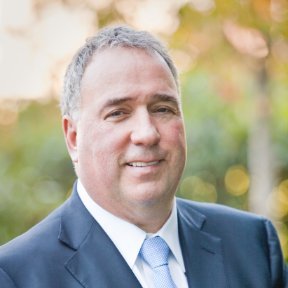Vendor Riverbed sees further channel consolidation in 2017. Karl Meulema (below), Senior Vice President Global Channels, has been looking at his European two-tier model and sees concentration as the way forward. Instead of over 1000 partners in the region, he would prefer to deal with the top players who make the commitment, and this will affect distribution as well.

Driving this are the changes in the technology, the booming SD Wan market and Riverbed's latest product acquisitions. “Everybody is being disrupted - this is the main driver for a lot of stuff that is happening. This year we have expanded with the acquisition of Aternity – and the Ocedo key components. We were looking at a number of elements of SD Wan – in the orchestration layer we were behind and have made a major step with Ocedo.”.
“In general, from the vision perspective we are now ahead of the market. SD Wan will be big in 2017, but takes some selling. There is definitely a big change coming. Luckily many of our partners come from a networking background and get that part of it - the other part is the innovators dilemma which weighs on traditional partners. They made their money through capex and the old model.
“Yes, there are lifestyle companies still making money with the old model, but we see seeing fast consolidation in the industry with partners who don't have either the energy or understanding. They have good assets but not the leadership. I don't know how many – and I don't really care. With Riverbed - acting as a typical start-up until recently - we looked at our partners and recruited strongly. So earlier this year we found we had 1063 partners in Europe for a $200m business - which just doesn't work. I don't care how many of these will make the transition. I care about the ten, 50 or 100 max who have the capacity and commitment, and they will be the ones I want to work with.”
Distribution widens the net, but not necessarily to large numbers, he says. “We started focussing on fewer partners two years ago. In the US, for example, some 72% of named account business comes focused partners – just 55 partners. The rest is the long tail, but this tail is getting shorter. As we move forward and get deliberation on which partners we invest in – the concentration will get higher.”
While traditional partners will see this high degree of concentration, he is also looking at development partners. “These are new channels who may not be there today and have no history, they perhaps never were a reseller and are born in the cloud. They are attractive to us and we are attractive to them.”
They class themselves as service providers but not in the traditional sense of a carrier like BT.
The distributors play an important role in proving enablement – in their world the same consolidation is happening – more concentration. “We had 14 distribution partners in EMEA, we are now down to eight, and we still have eight only because it is EMEA, and the African and Middle East businesses need local distribution.”
“So we're not going as far as national distribution, but Russia Turkey, Middle East are special cases. We have more than I would like, but we have been critical about why we have three distributors covering Switzerland and Germany. We're not done with that process – we have done with the names; the next step is to rationalise how many we have in each country. We may need just one in a smaller country; there will be some give and take, but we are all business people and let's not get emotional about this. It will be better for everyone in the long run.”
“In the programmes, the first wave of what we will do is change how we reward partners. Looking at the type of partners we work with, it is pointless to ask how many of their salespeople are selling Riverbed on a day-to-day basis. What we aim to do is to get Riverbed embedded in their repeatable solutions. We will help them build a more repeatable, standardised solution where the engineering and commercials around it are set, - yes there is some customisation but no more than about 20%. then your cost of selling and support is reduced, our cost of selling goes down so we will give you more incentives to do this.”
This is a critical component for Riverbed, and it is training its own sales people to work with this model. “So far, this has been well received – it is not a cookie cutter that is the same for every partner. It depends on their expertise – vertical or whatever. For me the beauty of it is that we get Riverbed combined with other technologies to build a broader solution. The proposition that our technology builds on visibility and now SD WAN– enables them to build a viable service that can be repeated.”
“We are seeing similar things with distribution who have invested in integration capabilities.”
“The second idea is joint engagement where we want our own sales people to work with channels in jointly approaching a small number of customers. We will do this exclusively so we win or lose together. And we will give an extra incentive for this as we know it takes time.”
“We can measure this and find out who is good at this.”